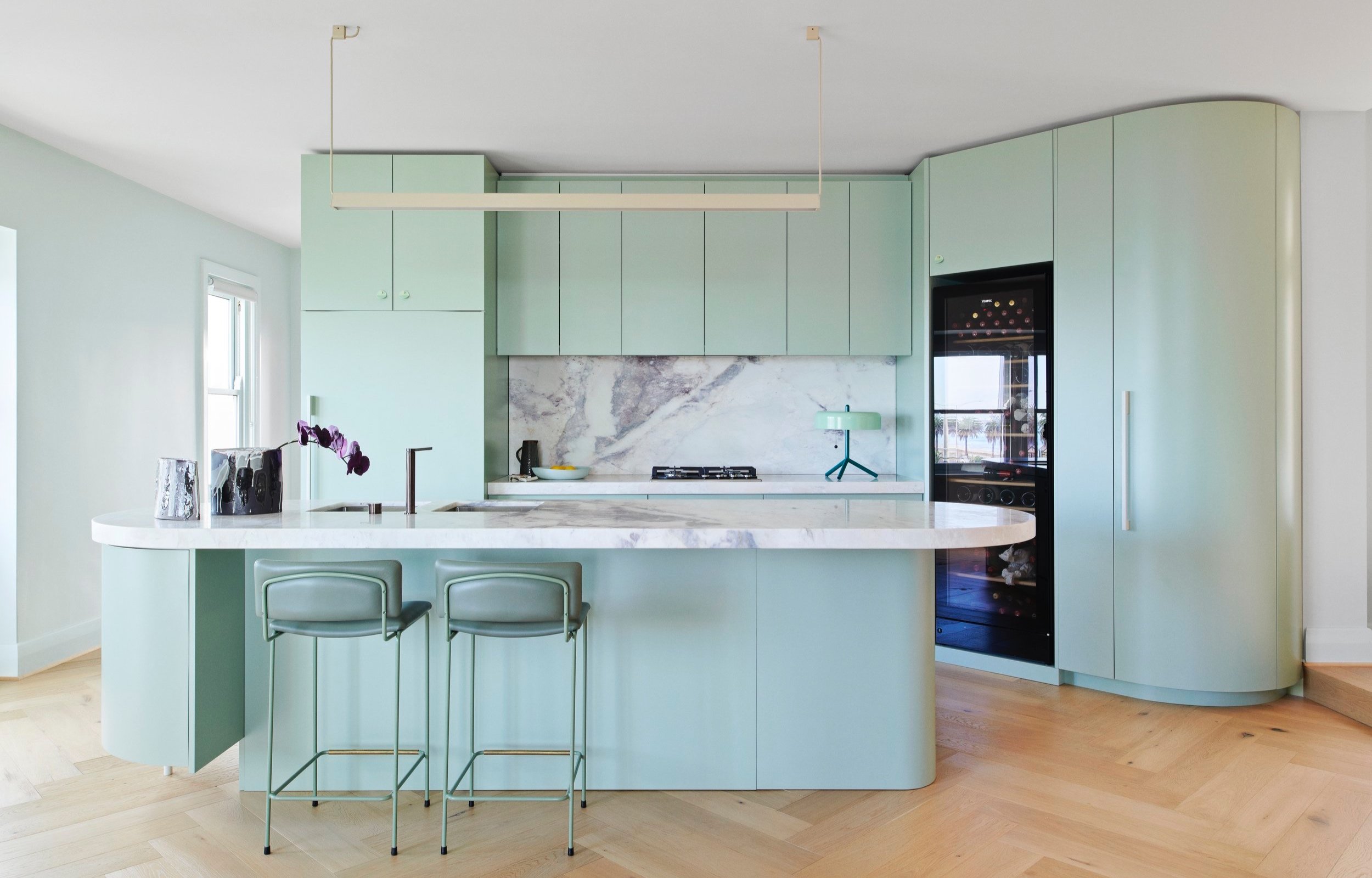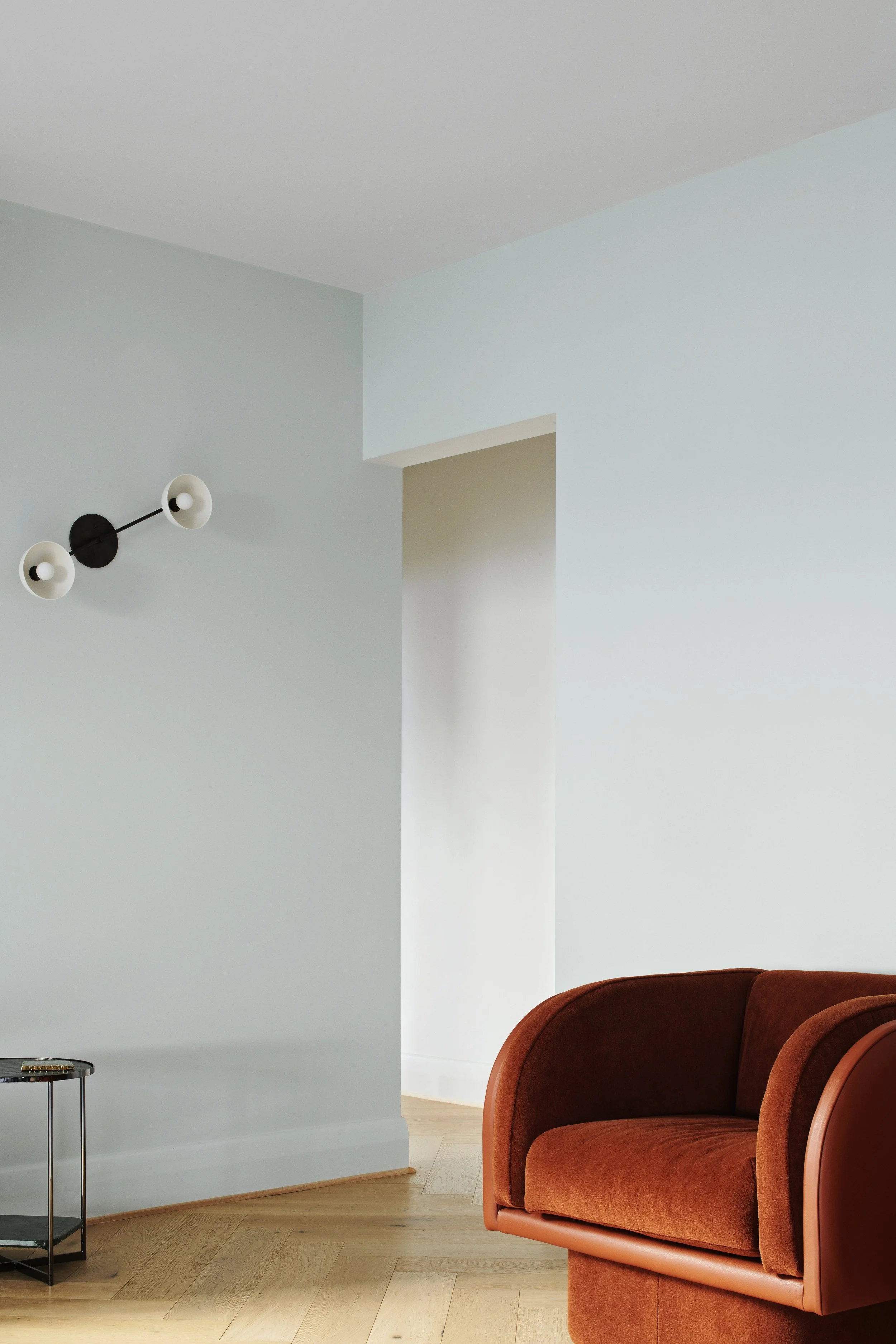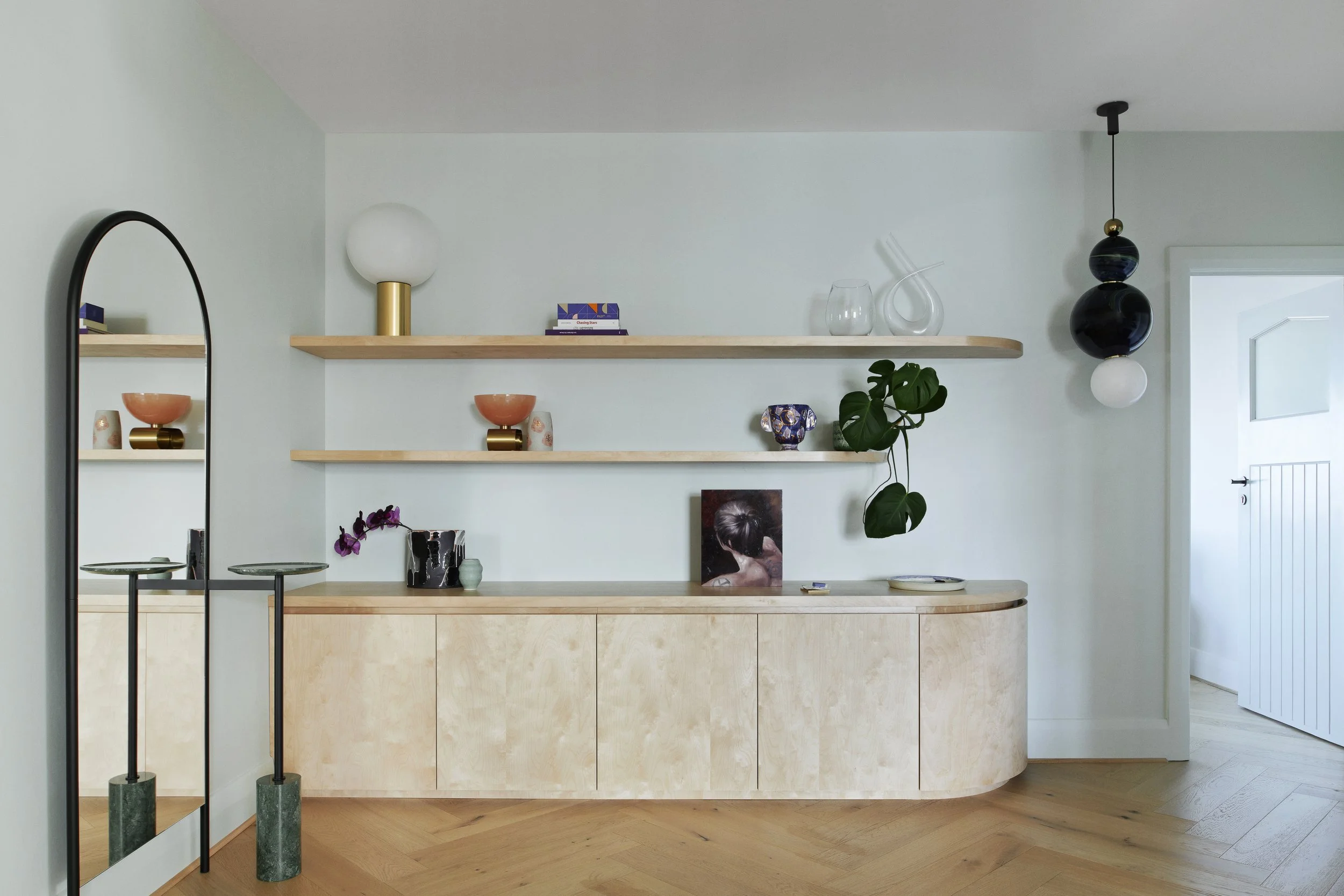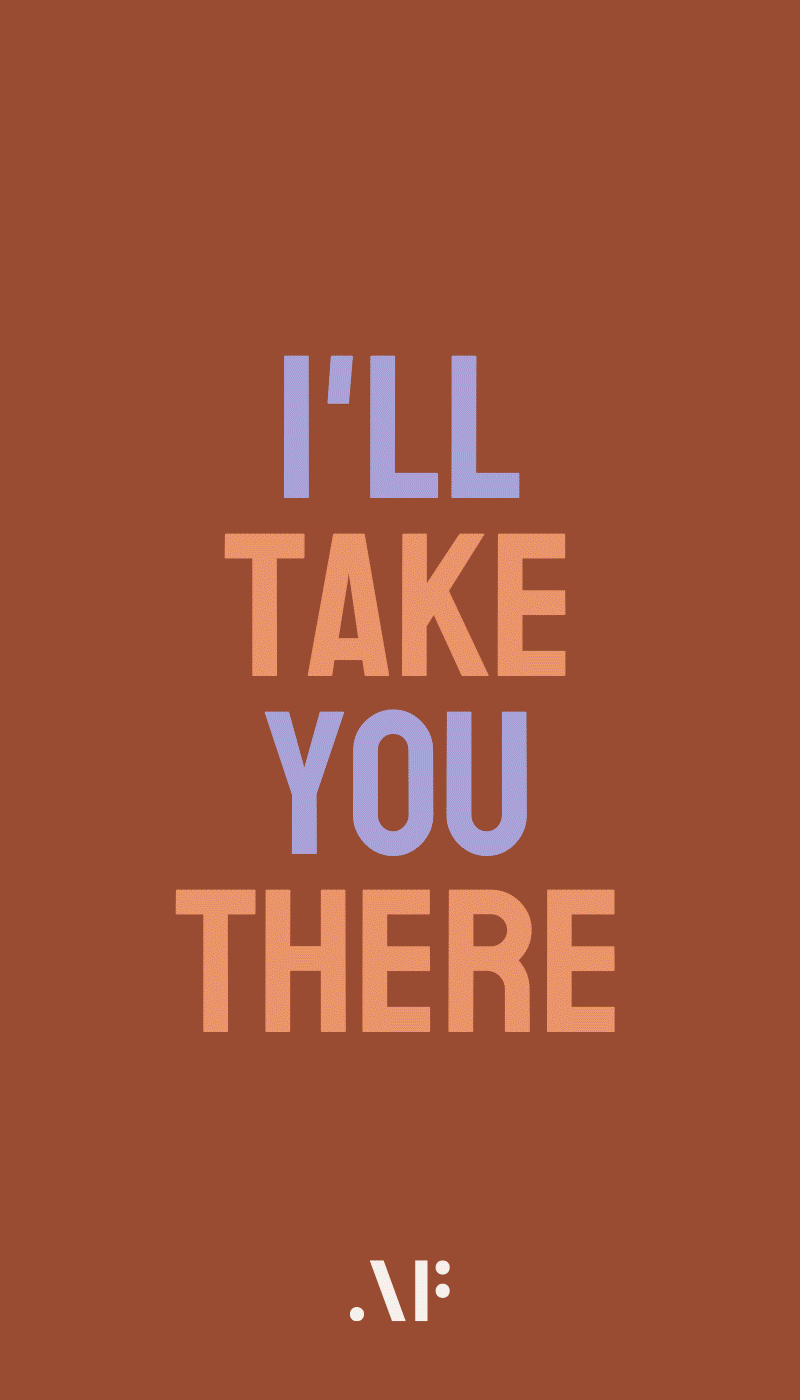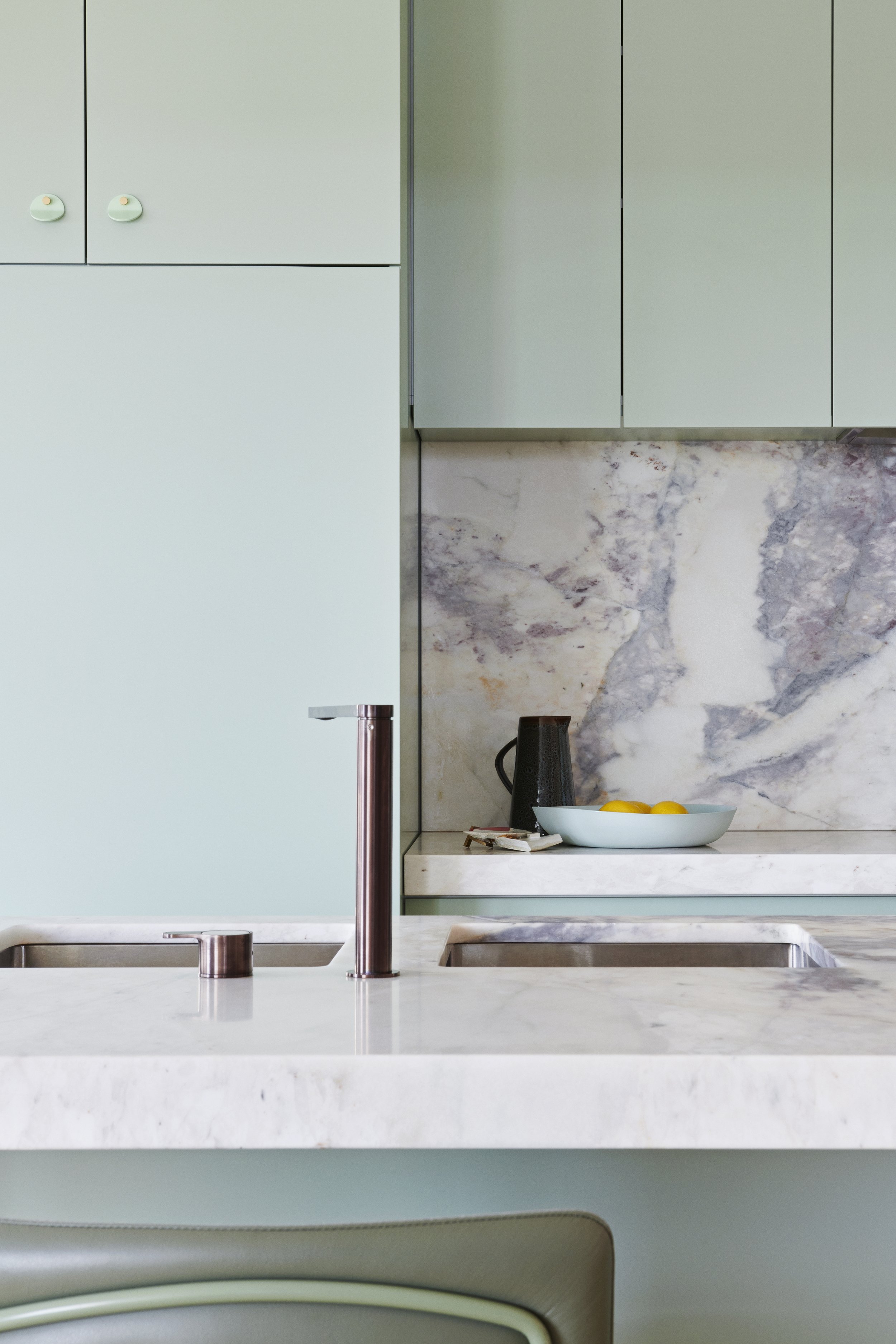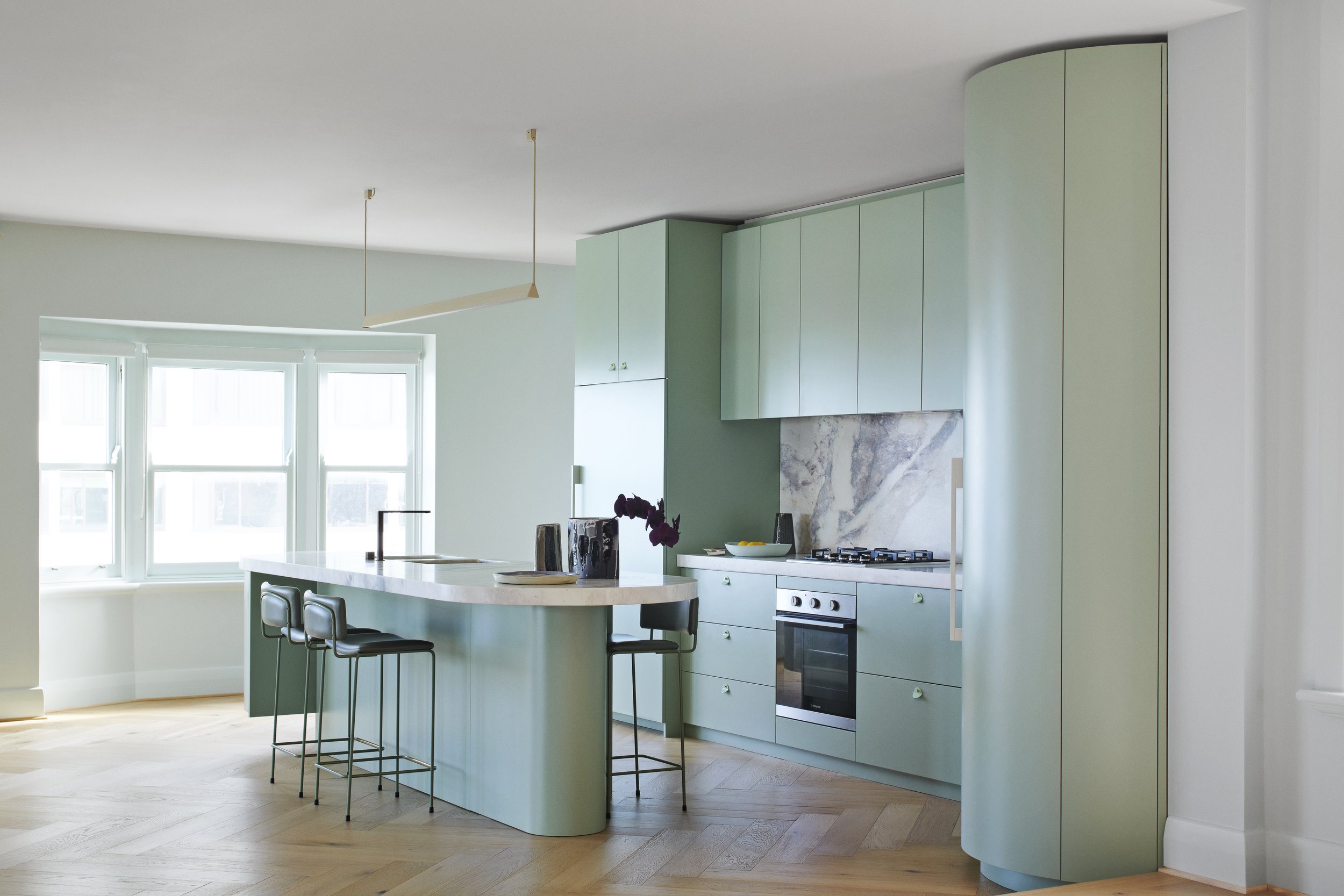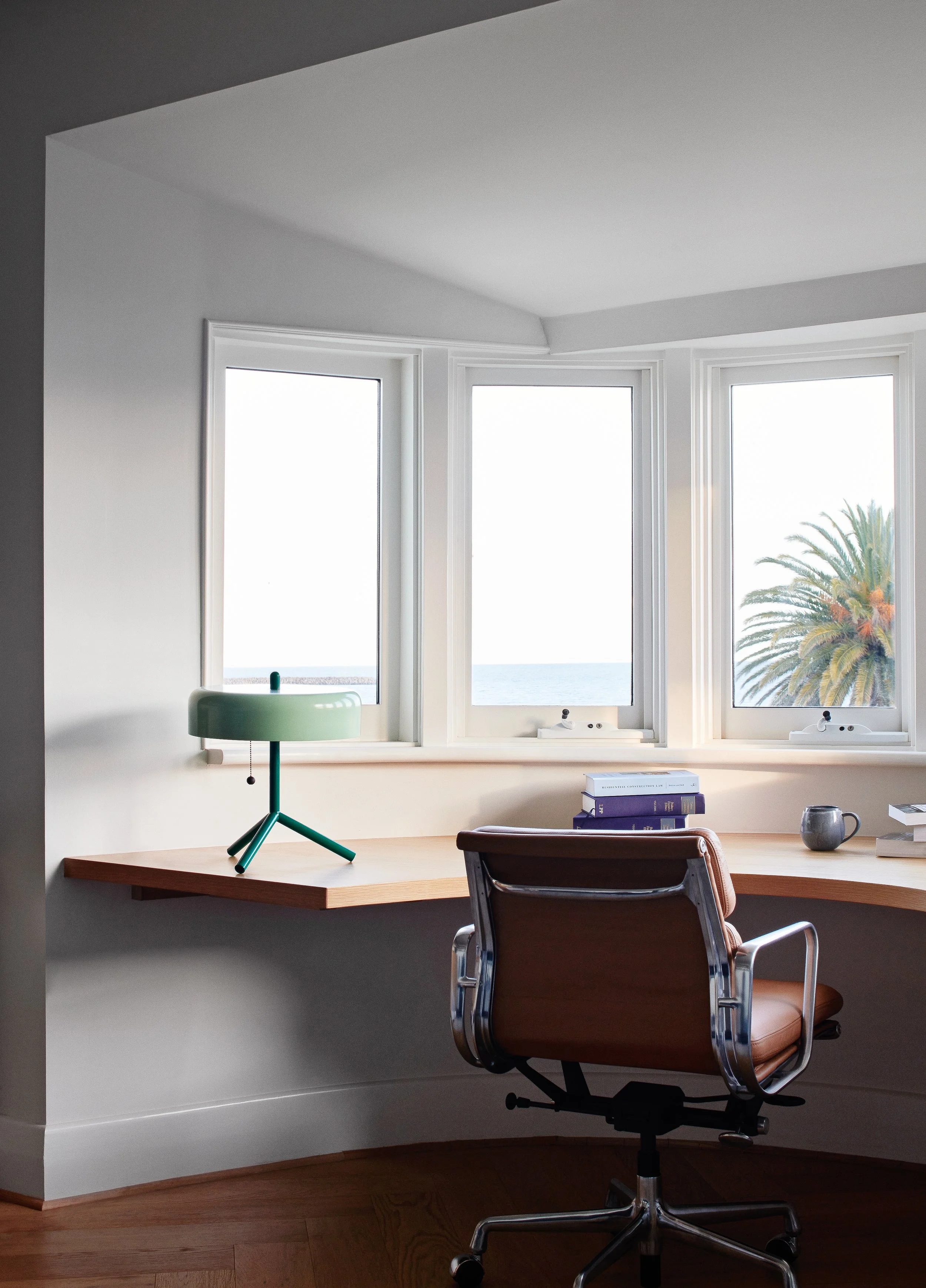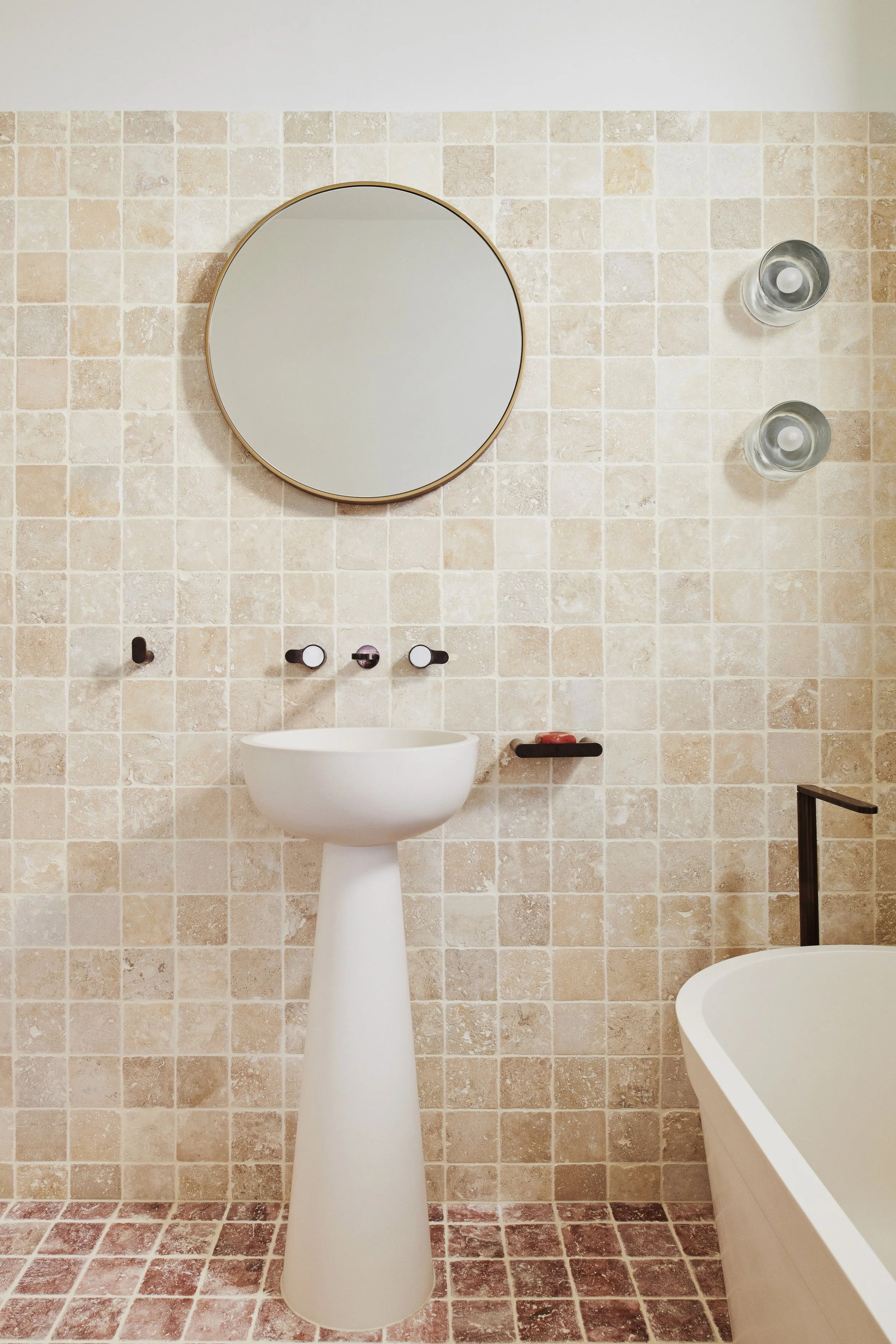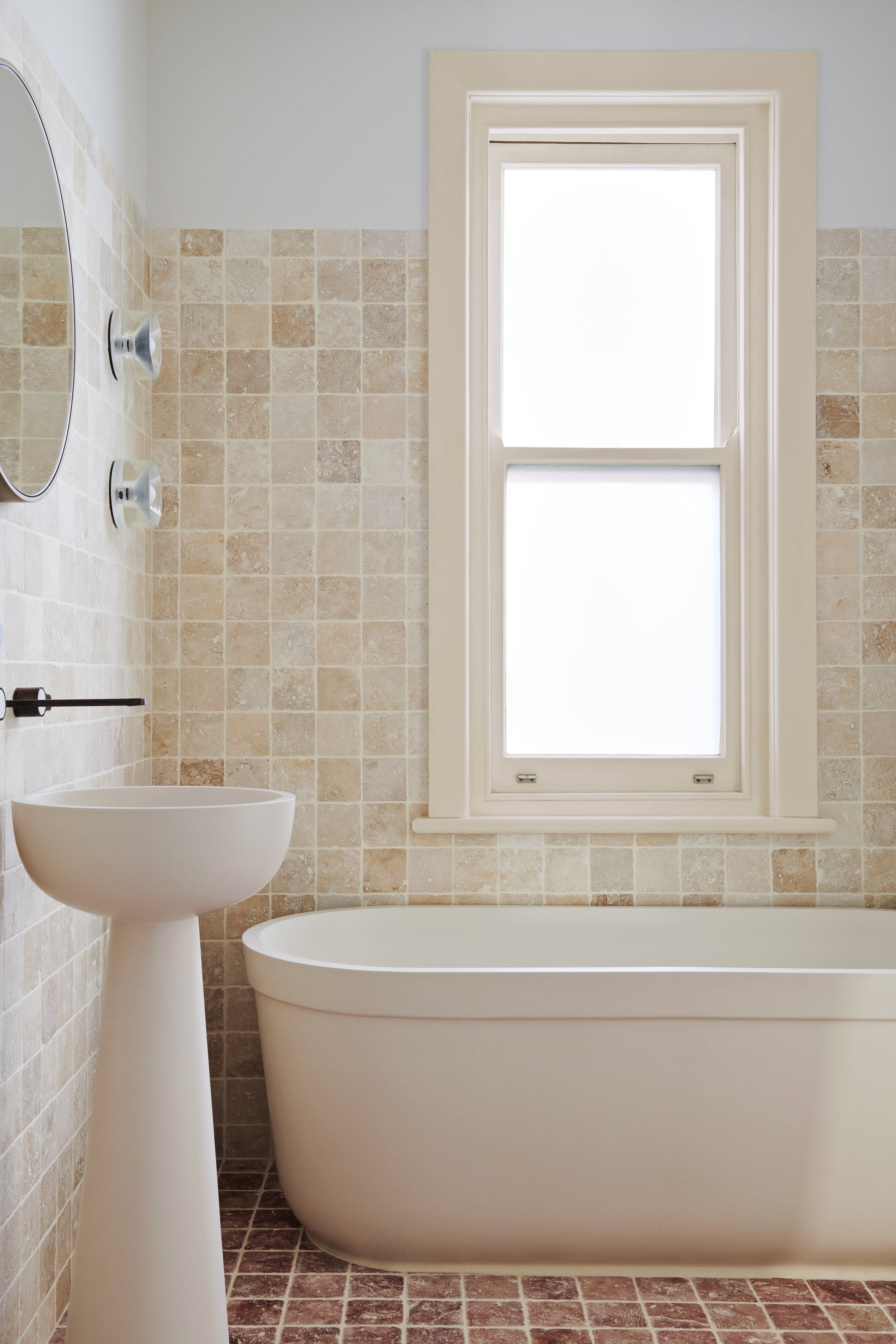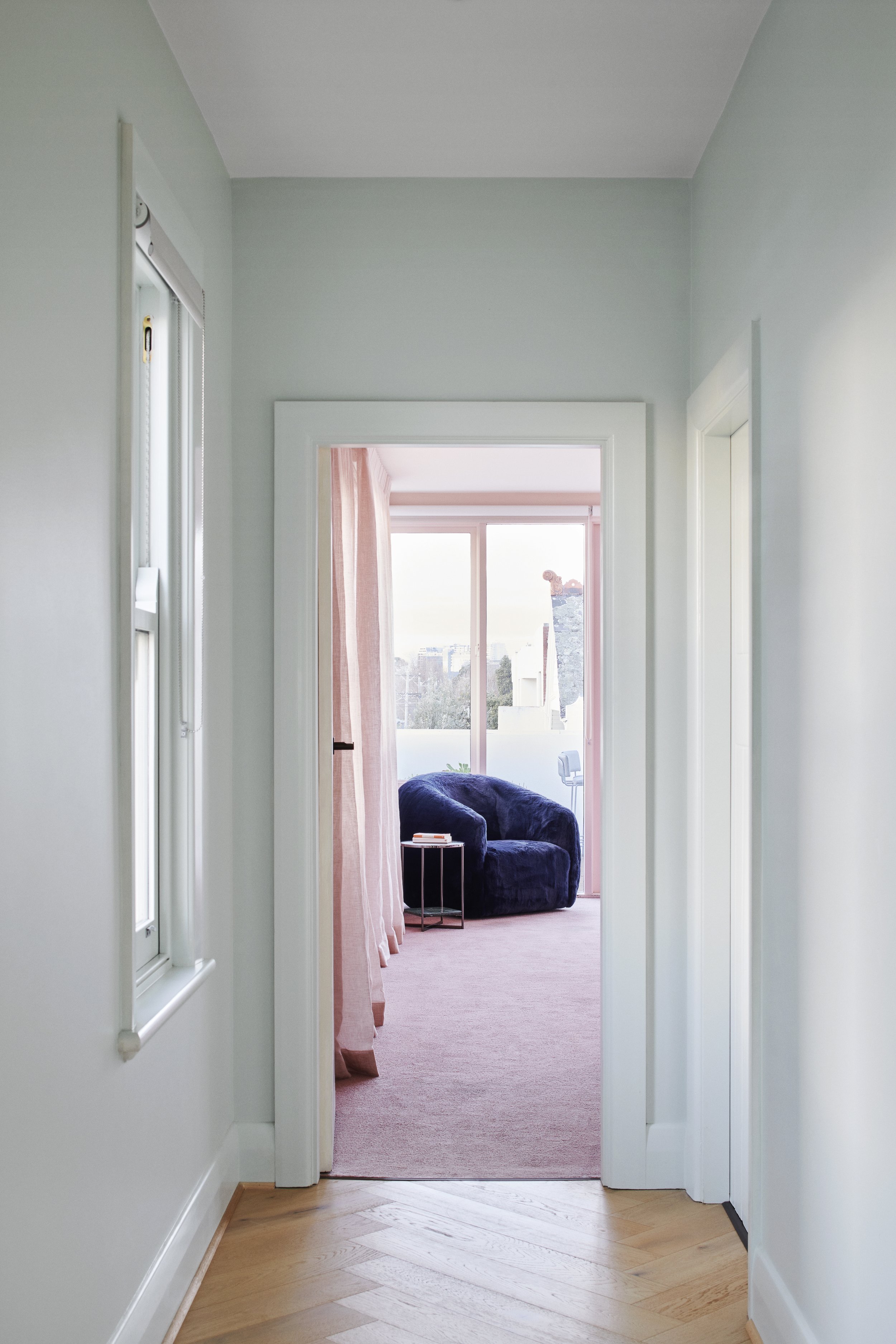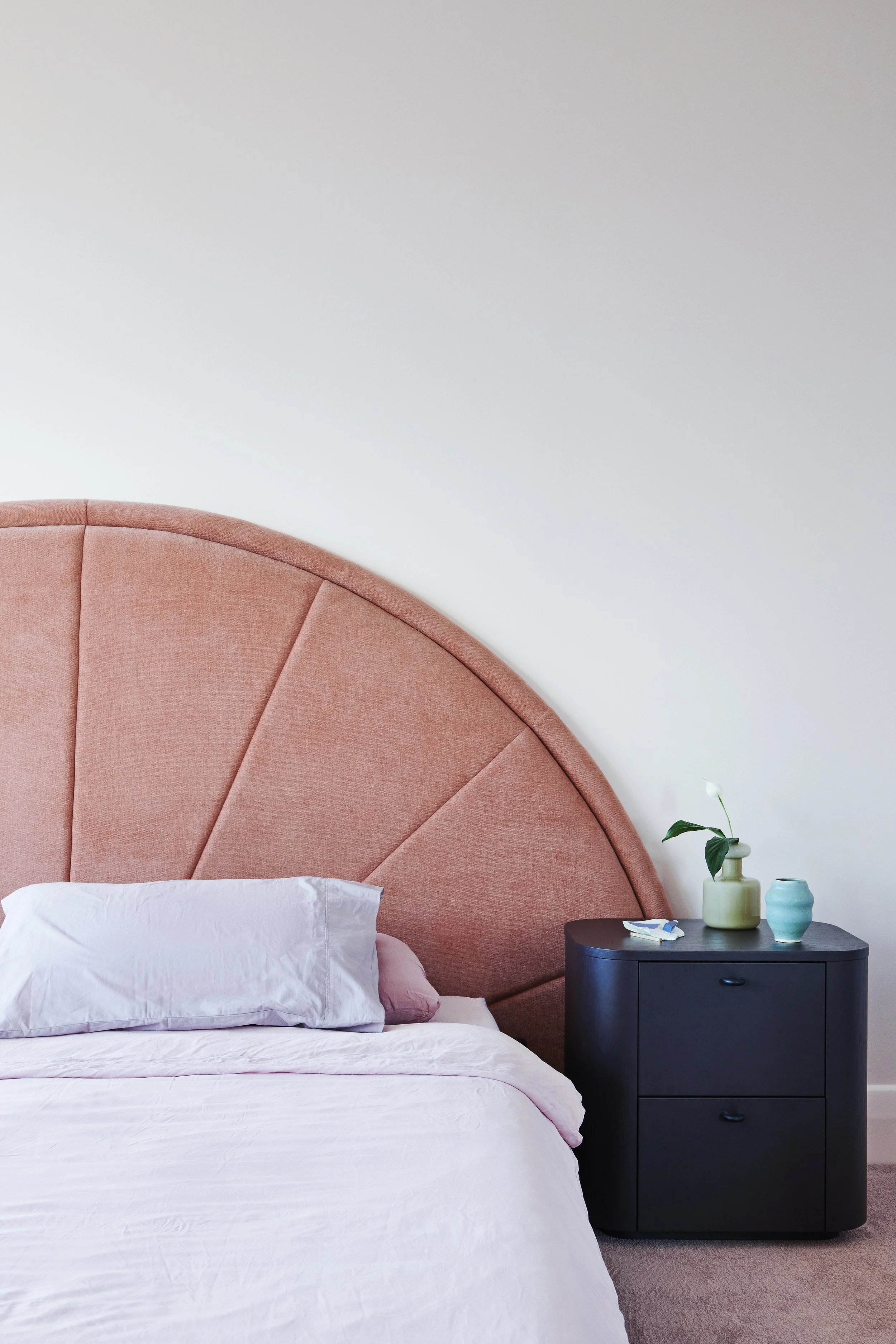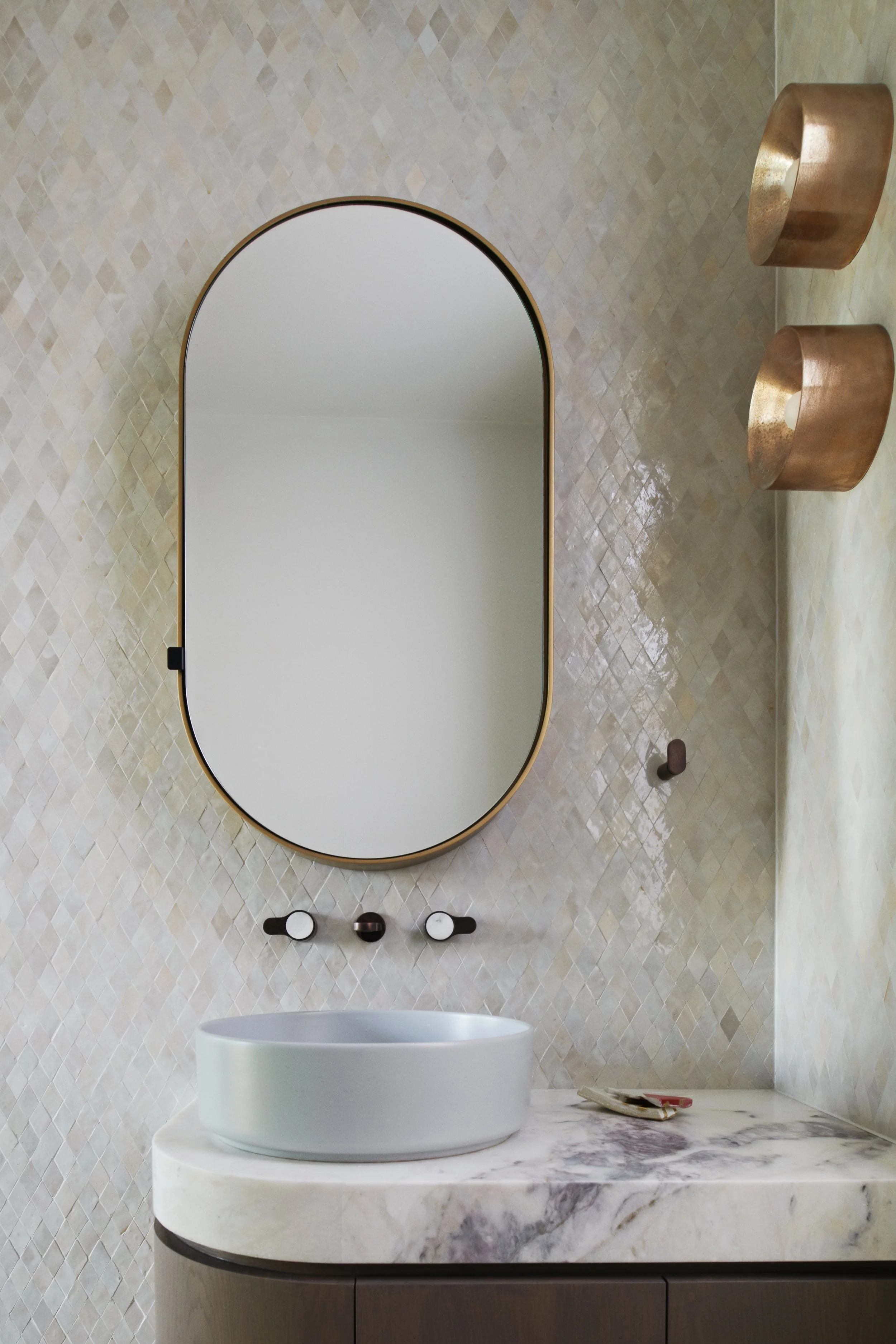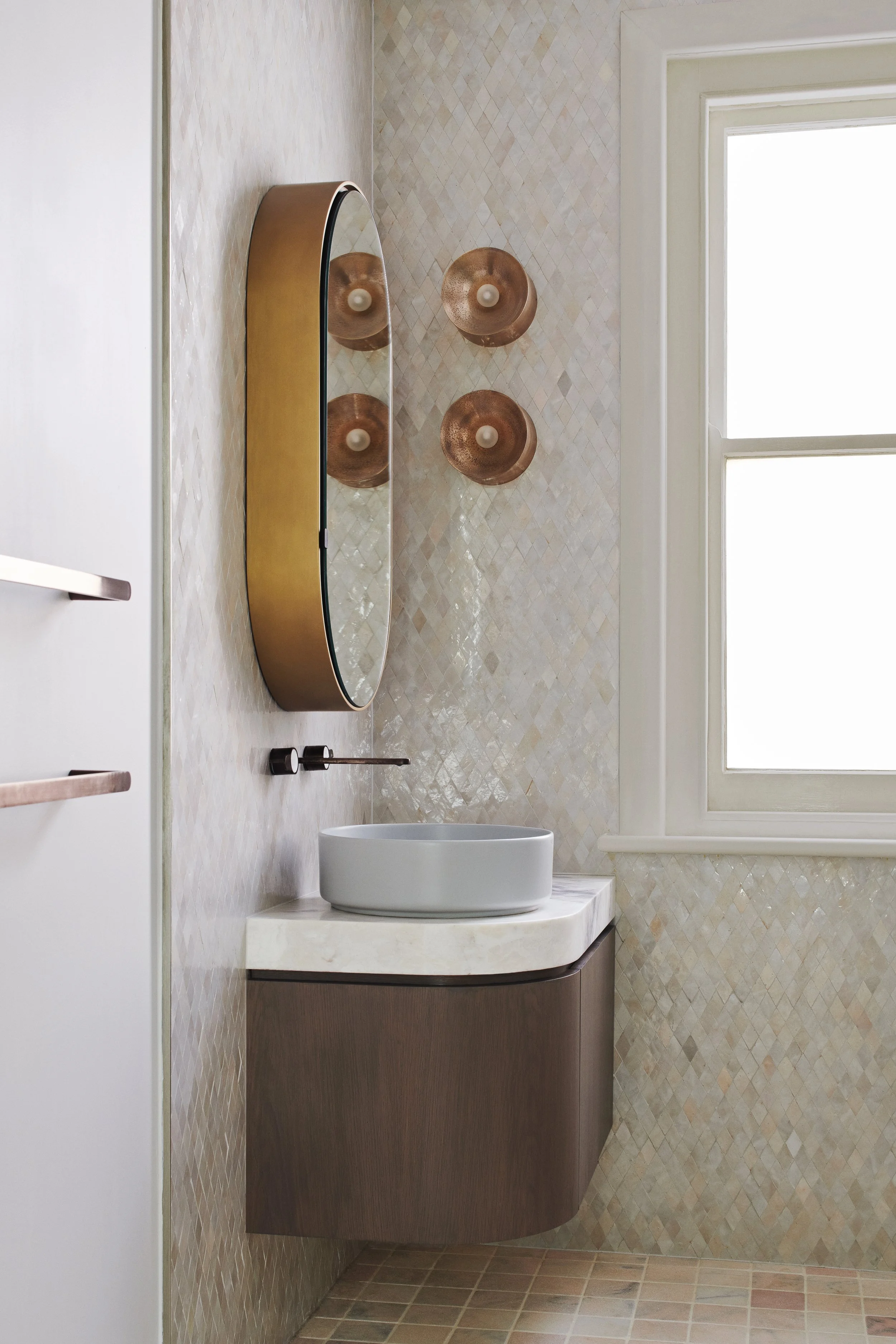Danielle Brustman
Multidisciplinary designer and artist Danielle Brustman’s design projects are assembled in many layered parts: from furniture design and interiors, to objects and installations.
Photography: Nicole England & Dylan James
‘My business now has two streams. I design interiors for residential , education and retail projects, as well as furniture, object and lighting for exhibitions,’ says Danielle Brustman. Artwork: Fortuna, 2023 by Danielle Brustman. Photo: Dylan James
Middle Park Apartment by Danielle Brustman. Photo: Nicole England
Cabinetry in Dulux Tranquil Green. Photo: Nicole England
Cabinetry in Dulux Tranquil Green, stools from Grazia & Co. Ceramic vases from Ashisha Cunningham. Photo: Nicole England
Cabinetry in Dulux Tranquil Green, stools from Grazia & Co. Ceramic vases from Ashisha Cunningham. Photo: Nicole England
H&F: Hi Danielle – what led you here and how has your journey evolved?
Danielle: I graduated from interior design at RMIT in the early 2000s. From there I took a slight turn and ended up working in theatre as a stage and costume designer for about 10 years. I mostly worked in the experimental theatre realm, which was both multi-disciplinary and collaborative in nature. I loved the world of theatre and the people in it. My set design budgets were tiny and I had to be very inventive with materials and design devises. Paint and colour become a very useful tool as it allowed me create quite striking sets that were bold but economical. Over this time I continued to dabble with interior design on residential and hospitality projects for friends and family but it wasn’t until 2014, not long after my daughter Cleo had been born that I decided to set up my own interior design studio and things took off from there. In 2018, I was invited by the NGV as a finalist in the Rigg Design Prize. This opportunity to exhibit a large scale interior design installation opened up all sorts of new and exciting possibilities. It allowed me to branch out further and design furniture and lighting for exhibition purposes as well as interiors. My business now has two streams – I design interiors for residential , education and retail projects, as well as furniture, object and lighting for exhibitions. My furniture design work is represented by Sophie Gannon Gallery, in Melbourne.
Do you both have a disciplined studio routine and any rituals to help keep you focused?
I’m not particularly routined and each day plays out differently depending on the projects I have on at the time but the constant ritual is always coffee. I drink way too much of it and punctuate my day with several trips to the coffee shop.
As a designer and artist, what’s the best lesson you’ve learnt along the way?
I think once you start feeling comfortable or stagnant it’s time to change gear and seek at new inspirations and ideas. Art has the capacity to move people deeply both as practitioners and as audience. It is a powerful force that can move through you if you remain open and willing to try new things.
Your proudest achievement so far?
I think my proudest achievement was exhibiting in the Rigg Design Prize in 2018. It felt extremely rewarding and expansive to have my work presented at the NGV alongside such esteemed designers. It was a true honour to show work there and to engage with such a broad public audience.
What drives your creativity?
I think for many people who work in the arts or design, creativity is innate. I’ve been drawing and making things since I was a little kid. I grew up in a household as an only child most of the time and from the get-go I had to work out ways to entertain myself by using my imagination. I’m not sure where the drive comes from, but I know that I start feeling very strange if I’m not being creative or engaging in art or design in some way. Design for me is a form of self-expression but it’s also a mild compulsion.
Did you have an interest in design from a young age?
Yes, from a very young age. My favourite thing to do when I was a kid was rearranging the furniture at both my parents’ houses. They were very obliging and let me decorate my little heart out. Me and my dad also used to spend Sundays driving around Melbourne looking at interesting houses.
Volker Haug Oddments pendant light, armchairs from Zuster, leather lounge from Stylecraft. Photo: Nicole England
The study with incredible water views at Middle Park Apartment. Photo: Nicole England
‘I like bold, oversized graphic shapes. I tend to be attracted to geometric shapes and I love a good curve!’ says Danielle Brustman. Photo: Nicole England
Natural Travertine tiles from Tiles of Ezra. Photo: Nicole England
Natural Travertine tiles from Tiles of Ezra. Photo: Nicole England
“I love that my job allows me to be myself – it’s a very fortunate position to be in. It’s an honour to work with clients and collaborators so closely in an attempt to create spaces that are artful, enjoyable, useful, helpful, inspiring and meaningful.”
Armchair from Zuster. Photo: Nicole England
Bedhead from The Family Love Tree. Photo: Nicole England
Moroccan mosaic tiles from Tiles of Ezra. Cielo sink from Design Precinct. Photo: Nicole England
Moroccan mosaic tiles from Tiles of Ezra. Cielo sink from Design Precinct. Photo: Nicole England
What shapes and forms do you mostly gravitate to in your designs?
I like bold, oversized graphic shapes. I tend to be attracted to geometric shapes and I love a good curve!
How do you stay grounded?
I think being a mum keeps me pretty grounded. It’s a different stage of life – I got more serious about my work and my career after my daughter was born. I was a little wilder and not so grounded before she came along.
What’s a dream you would still like to fulfil?
I’m absolutely dying to design a hotel. I’ve been dreaming this up for several years, but still waiting for the right client and project to come along.
What furniture, decorating pieces/styles do you mostly gravitate to?
I’m very excited about the local furniture and lighting design scene happening and evolving here in Australia. The standard is world class, and it makes so much sense to specify locally designed and fabricated pieces. An exciting vernacular is forming. There are so many interesting, elegant and ethically designed pieces being made over here.
What do you love most about what you do?
I love that my job allows me to be myself. It’s a very fortunate position to be in. It’s an honour to work with clients and collaborators so closely in an attempt to create spaces that are artful, enjoyable, useful, helpful, inspiring and meaningful.
Did you ever have a plan b, work-wise?
I never really had a plan B but if I wasn’t working as a designer I would like to study psychology. I find people’s inner workings endlessly fascinating.
What piece of valuable advice would you give a designer starting out?
I think a great lesson is to find something that you are naturally good at and to pursue and practice that thing. ( I heard Erykah Badu say that in an interview the other day). I also think it is most important to make work that feels the most genuine and truthful to you which is a similar concept I guess. When I was younger I used to feel as though I had to mask who I truly was but now I feel more confident in letting the real me out in the world and I think the design outcomes are more authentic and interesting, Above all, the most important lesson would have to be just keep going!
Your Middle Park project features pastel tones and features - why did you choose this palette?
The apartment had great bones. Located on Beaconsfield pde in one of Melbourne's prettiest seaside spots. The apartment is located on the top floor of the 3 storey building and has spectacular Bay views on one side and fantastic CBD views on the other. The building is a classic 1930's Art Deco. The apartment had been renovated in a fairly generic, white- washed kind of a way and my clients wanted to return the palette to one that spoke more directly to the Art deco period. I wanted the apartment to have a contemporary Deco feel to it as well as pay homage to the glorious pastel palettes belonging to Art Deco architecture, commonly found in the Bayside part of Melbourne. The greens in the kitchen were a nod to a by-gone era of Australiana art deco design. When I think of art deco architecture and interiors I think of mint green bakelite containers and green ceramic vases.
What’s coming up for you this year?
I am working towards a solo show at Sophie Gannon Gallery in 2024 along with several interior design projects in the early education sector. I am also hoping to present work in an international exhibition, fingers crossed!


